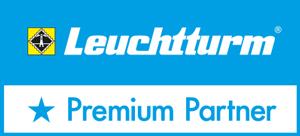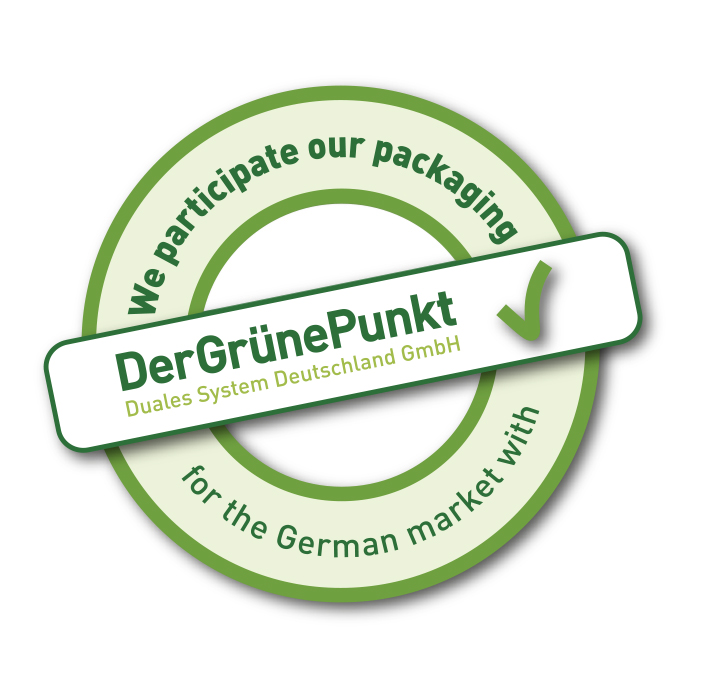Croatia 2023 coin set 3,88 (loose)
Price:
15,00 €
The euro coin series comprises eight different denominations: 1, 2, 5, 10, 20 and 50 cent, €1 and €2. The euro coins have a common side and a national side. The national side indicates the issuing country. The common sides of the coins were designed by Mr Luc Luycx of the Royal Belgian Mint.
They show images of the European Union or of Europe and symbolise the unity of the EU. The 1, 2 and 5 cent coins show Europe in relation to Africa and Asia on a globe.
Croatia has chosen four designs for their national sides of the euro coins, all featuring the distinctive Croatian chequerboard pattern in the background. All the coins also depict the 12 stars of the European flag.
The €2 coin features a map of Croatia on a chequerboard background. The design, by Ivan Šivak, includes the year of issuance and the inscription “HRVATSKA”, the country’s name in Croatian.
Edge lettering of the €2 coin: “O LIJEPA O DRAGA O SLATKA SLOBODO” (“Oh beautiful, oh dear, oh sweet freedom”), a line from Ivan Gundulić’s famous play, Dubravka.
The €1 coin shows a marten on a chequerboard background and was designed by Jagor Šunde, David Čemeljić and Fran Zekan. The marten is a small mammal that lent its name to the country’s former currency, the kuna. The design includes the year of issuance and the inscription “HRVATSKA”, the country’s name in Croatian.
The 50 cent , 20 cent and. 10 cent coin features a portrait of inventor and engineer Nikola Tesla, who developed alternating current technology. The coin was designed by Ivan Domagoj Račić and includes the year of issuance and the inscription “HRVATSKA”, the country’s name in Croatian.
The 1, 2 and 5 -cent coin shows a motif of the letters “HR” in the angular Glagolitic script. The Glagolitic alphabet is the oldest known Slavic script and was used in Croatia until the 19th century. The coin was designed by Maja Škripelj and includes the year of issuance and the inscription “HRVATSKA”, the country’s name in Croatian.
They show images of the European Union or of Europe and symbolise the unity of the EU. The 1, 2 and 5 cent coins show Europe in relation to Africa and Asia on a globe.
Croatia has chosen four designs for their national sides of the euro coins, all featuring the distinctive Croatian chequerboard pattern in the background. All the coins also depict the 12 stars of the European flag.
The €2 coin features a map of Croatia on a chequerboard background. The design, by Ivan Šivak, includes the year of issuance and the inscription “HRVATSKA”, the country’s name in Croatian.
Edge lettering of the €2 coin: “O LIJEPA O DRAGA O SLATKA SLOBODO” (“Oh beautiful, oh dear, oh sweet freedom”), a line from Ivan Gundulić’s famous play, Dubravka.
The €1 coin shows a marten on a chequerboard background and was designed by Jagor Šunde, David Čemeljić and Fran Zekan. The marten is a small mammal that lent its name to the country’s former currency, the kuna. The design includes the year of issuance and the inscription “HRVATSKA”, the country’s name in Croatian.
The 50 cent , 20 cent and. 10 cent coin features a portrait of inventor and engineer Nikola Tesla, who developed alternating current technology. The coin was designed by Ivan Domagoj Račić and includes the year of issuance and the inscription “HRVATSKA”, the country’s name in Croatian.
The 1, 2 and 5 -cent coin shows a motif of the letters “HR” in the angular Glagolitic script. The Glagolitic alphabet is the oldest known Slavic script and was used in Croatia until the 19th century. The coin was designed by Maja Škripelj and includes the year of issuance and the inscription “HRVATSKA”, the country’s name in Croatian.
Sarnased tooted
The euro coin series comprises eight different denominations: 1, 2, 5, 10, 20 and 50 cent, €1 and €2. The euro coins have a common side and a national side. The national side indicates the issuing country. The common sides of the coins were designed by Mr Luc Luycx of the Royal Belgian Mint.
They show images of the European Union or of Europe and symbolise the unity of the EU. The 1, 2 and 5 cent coins show Europe in relation to Africa and Asia on a globe.
Croatia has chosen four designs for their national sides of the euro coins, all featuring the distinctive Croatian chequerboard pattern in the background. All the coins also depict the 12 stars of the European flag.
The €2 coin features a map of Croatia on a chequerboard background. The design, by Ivan Šivak, includes the year of issuance and the inscription “HRVATSKA”, the country’s name in Croatian.
Edge lettering of the €2 coin: “O LIJEPA O DRAGA O SLATKA SLOBODO” (“Oh beautiful, oh dear, oh sweet freedom”), a line from Ivan Gundulić’s famous play, Dubravka.
The €1 coin shows a marten on a chequerboard background and was designed by Jagor Šunde, David Čemeljić and Fran Zekan. The marten is a small mammal that lent its name to the country’s former currency, the kuna. The design includes the year of issuance and the inscription “HRVATSKA”, the country’s name in Croatian.
The 50 cent , 20 cent and. 10 cent coin features a portrait of inventor and engineer Nikola Tesla, who developed alternating current technology. The coin was designed by Ivan Domagoj Račić and includes the year of issuance and the inscription “HRVATSKA”, the country’s name in Croatian.
The 1, 2 and 5 -cent coin shows a motif of the letters “HR” in the angular Glagolitic script. The Glagolitic alphabet is the oldest known Slavic script and was used in Croatia until the 19th century. The coin was designed by Maja Škripelj and includes the year of issuance and the inscription “HRVATSKA”, the country’s name in Croatian.
They show images of the European Union or of Europe and symbolise the unity of the EU. The 1, 2 and 5 cent coins show Europe in relation to Africa and Asia on a globe.
Croatia has chosen four designs for their national sides of the euro coins, all featuring the distinctive Croatian chequerboard pattern in the background. All the coins also depict the 12 stars of the European flag.
The €2 coin features a map of Croatia on a chequerboard background. The design, by Ivan Šivak, includes the year of issuance and the inscription “HRVATSKA”, the country’s name in Croatian.
Edge lettering of the €2 coin: “O LIJEPA O DRAGA O SLATKA SLOBODO” (“Oh beautiful, oh dear, oh sweet freedom”), a line from Ivan Gundulić’s famous play, Dubravka.
The €1 coin shows a marten on a chequerboard background and was designed by Jagor Šunde, David Čemeljić and Fran Zekan. The marten is a small mammal that lent its name to the country’s former currency, the kuna. The design includes the year of issuance and the inscription “HRVATSKA”, the country’s name in Croatian.
The 50 cent , 20 cent and. 10 cent coin features a portrait of inventor and engineer Nikola Tesla, who developed alternating current technology. The coin was designed by Ivan Domagoj Račić and includes the year of issuance and the inscription “HRVATSKA”, the country’s name in Croatian.
The 1, 2 and 5 -cent coin shows a motif of the letters “HR” in the angular Glagolitic script. The Glagolitic alphabet is the oldest known Slavic script and was used in Croatia until the 19th century. The coin was designed by Maja Škripelj and includes the year of issuance and the inscription “HRVATSKA”, the country’s name in Croatian.
45,00 €
Similar products
The Mint of the Vatican City State presents the Vatican Coin Card N. 3, a blister card showing the Holy Father with a 1 euro coin bearing the date 2024.
Mintage: 80 000 coin cards
Mintage: 80 000 coin cards
19,00 €
This is a standard coin set including six brilliant uncirculated coins of Japan as well as a special medal featuring this year's oriental zodiac, the Rabbit
39,00 €
The year 2022 marks two major European events. The first of January 2022 celebrates the 20th anniversary of the introduction of the euro, replacing the franc and becoming at the same time the European currency of the member countries of the euro zone. In addition, France will hold the Presidency of the Council of the European Union in 2022, 13 years after its last Presidency. It is in this conjunction of major events that the change of the national face of the French €1 and €2 currencies is taking place, two decades after the appearance of the European currency.
The new € 2 circulation coins 2022. allows us to observe the evolution of the national sides, designed almost 20 years apart by Joaquin Jiménez, General Engraver of the Monnaie de Paris.
The new € 2 circulation coins 2022. allows us to observe the evolution of the national sides, designed almost 20 years apart by Joaquin Jiménez, General Engraver of the Monnaie de Paris.
9,00 €
Andorra signed a Monetary Agreement with the European Union on 30 June 2011. As a result, Andorra can use the euro as its official currency and issue its own euro coins. All the coins feature the 12 stars of the European flag.
The €1 coin features Casa de la Vall, the former seat of parliament and a building of cultural and historical interest.
The €1 coin features Casa de la Vall, the former seat of parliament and a building of cultural and historical interest.
15,00 €
Metal: Cupper/Nickel
Weight: 6,9 g
Diameter: 27,13 (mm)
Quality: Unc
As we focus our attention on commemorating the reign of Queen Elizabeth II (1952-2022), the Mint will not be issuing any 2023-dated Canadian circulation coins featuring both the traditional reverse designs and an obverse featuring Queen Elizabeth II.
Weight: 6,9 g
Diameter: 27,13 (mm)
Quality: Unc
As we focus our attention on commemorating the reign of Queen Elizabeth II (1952-2022), the Mint will not be issuing any 2023-dated Canadian circulation coins featuring both the traditional reverse designs and an obverse featuring Queen Elizabeth II.
3,00 €











